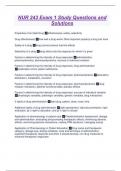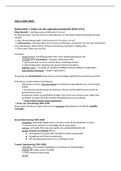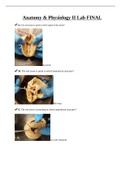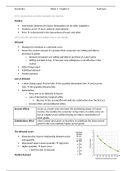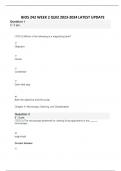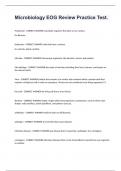Exam (elaborations)
NUR 243 Exam 1 Study Questions and Solutions
- Course
- Institution
Properties of an Ideal Drug effectiveness, safety, selectivity Drug effectiveness how well a drug works. Most important property a drug can have Safety of a drug drug cannot produce harmful effects Selectivity of a drug drug elicits only the response for which it is given Factors in determining...
[Show more]
